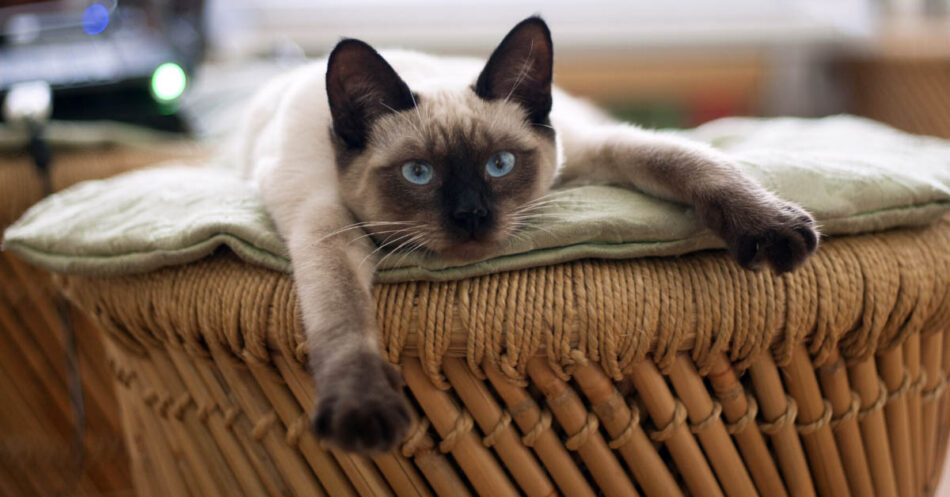
5 of the Strangest Cat Behaviors Solved
This post may include affiliate links. Please read my disclosure policy.
If there’s anything more intriguing than cat behavior, I don’t know what it is! I’ve never met a cat parent who didn’t have at least a couple of amusing and quirky stories to share.
Sometimes, though, our cats’ quirks go beyond being entertaining and lovable. Some cat behaviors leave us feeling frustrated, puzzled, and even worried that something might be wrong. Of course, any time you have a question about your cat’s well-being, your veterinarian is your best resource. He or she will most likely be able to either calm your fears or identify and treat any lurking issues.
Pin Me!
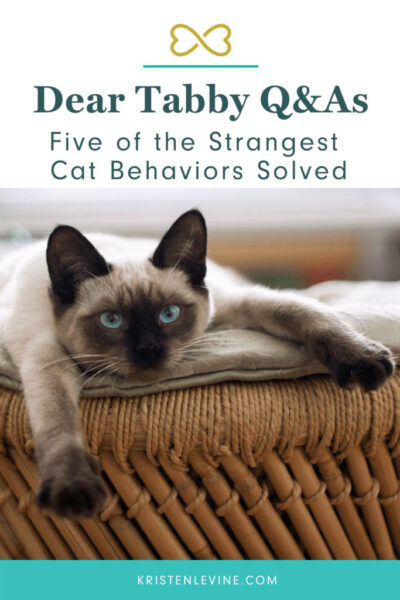
Thankfully, many of the strange things our feline friends do aren’t any indication of a medical issue. Many times they can be explained if we ask the right questions. Sometimes they just might be our cats’ subtle way of trying to tell us something. Figuring out what that is can be tricky though.
Ever since the launch of “Dear Tabby,” with my friends at World’s Best Cat Litter, the cat questions have been purr-ing in. Here are 5 more mysterious cat behaviors explained.
5 Strange Cat Behavior Mysteries Solved
Wondering why my two-year-old Siberian neutered cat still tries to hump things.
Although humans may find it puzzling, annoying, or even a little embarrassing, humping behavior in cats is just as normal as scratching or purring. There are also quite a few reasons behind it, and not all of them are hormonal.
A male neutered cat will usually hump substantially less than his unaltered counterparts, but being neutered doesn’t necessarily mean that your cat will never engage in this behavior. Especially if your cat was much older than six months when he was neutered, he may have begun humping before his surgery. Afterward, he may continue just out of habit.
Male and female cats may also hump if they are feeling stressed, especially if the stress is because of a new addition to the family. If this is the case, giving him lots of attention and sticking to a normal routine may help to reassure him and reduce the behavior over time. It’s also possible that your cat is telling you that he needs more playtime or more attention. Try adding a few extra play sessions or extra grooming and snuggles. It may be that once he’s worn out or feeling more secure that he won’t feel the need to hump quite as much.
Why would my cat go into her litter box, pee, come out, then poop on the floor?
Any time a cat has litter box issues, it’s worth mentioning to your veterinarian. A few medical conditions that could contribute to a cat pooping (but not peeing) on the floor include constipation, arthritis, or inflammatory bowel disease.
If your cat has a clean bill of health, there are still a number of possible explanations for cat poop on floor behavior. Cats can be quite particular about their litter boxes. A cat who chooses to do his business somewhere else may be letting you know that his box doesn’t meet his exacting standards.
Here are a few things you could try:
- Add another litter box. Some cats don’t like to pee and poop in the same box. An additional box, either across the room or in a different room, allows them to do their business in a separate area. It’s also possible that a cat who poops outside the box just doesn’t like to go in a box that’s already been used. For those kitties, scooping once or twice a day may not be enough. Another litter box increases the possibility that they’ll have a pristine spot available (other than your floor.)
- Move the litter box. Pooping generally takes longer than peeing does. If your cat’s litter box is wedged in a corner, hidden in a closet, or obscured by a cover, in his mind it may be cutting off his escape or preventing him from seeing possible threats while he is in a vulnerable position. Uncovering his box or moving it to an open location could ease his insecurities.
- Put out an empty box. For some reason known only to cats, some of them have different texture preferences when it comes to the surfaces they poop on compared to the surfaces they pee on. A cat who poops on the floor may be telling his parents that he wants to go on a smooth surface. Provide an empty litter box and see if he does his business in there. If he does, keep it clean for a while, and then eventually add a small amount of litter. If he continues using it, you can gradually increase the amount.
Is there a proper way I can clean around my cat’s eyes? He is Persian and always has a dark area of stained eye discharge on his face.
Regular cleaning can not only reduce tear stains, but it can also help keep your cat’s eyes free of any dust or other debris that could potentially lead to irritation or infection. My fur-vorite product for kitty eye care is Feline Antimicrobial Facial Therapy by Vetericyn® Plus. It’s antibiotic and steroid-free, it won’t sting or burn, and it’s completely safe if your cat happens to lick or ingest it for any reason.
All you have to do is apply a couple of drops to the corner of your cat’s eye and gently wipe away the excess liquid with a clean cotton ball. This will be enough to remove any cat eye discharge as well as any other irritants that could have settled near your cat’s sensitive eyes. Of course, any cat is likely to be a bit resistant to having anything dropped into his eye, but with practice, you’ll both get used to it. This video shows how to clean cat eyes from behind so your cat isn’t as likely to protest.
Use my code PETLIVING to get 20% off your purchase at Vetericyn.com.
How do I get my cat to use a scratching post? She refuses every kind but keeps trying to scratch up my couches. I’ve used sprays on the furniture with no help. I have tried using catnip on and around any post I buy her and she just walks away. We’re constantly playing, snuggling, and I try to make her happy but she won’t stop scratching the furniture.
I feel your frustration! A few years ago one of my cats decided to adopt a brand new upholstered chair as her purr-sonal scratching post. I learned a great trick to undo the damage as much as possible, but obviously, I also wanted to make sure to find her a more appropriate place to scratch. Here’s what experience has taught me about how to get a cat to use a scratching post.
Scratching is a natural and necessary behavior for cats. Getting them to use a cat scratching post instead of your furniture or drapes basically comes down to two things – encouraging them to scratch where they should and discouraging them from scratching where they shouldn’t.
When my cat began scratching my chair, I used a protective tape
to keep her from returning to the scene of the crime. Placing a scratching post right next to the covered-up corner of the chair will give your cat a convenient alternative when she finds that her old scratching spot is no longer as appealing as it used to be.
Another way to discourage scratching is to make a sudden noise (like clapping your hands) if you catch your cat in the act. You should use this tactic with caution though because you don’t want your cat to begin associating you with anything she finds unpleasant.
Clipping your cat’s nails regularly may also reduce her urge to scratch.
Cats have different preferences when it comes to scratching posts. Some prefer the vertical post kind, while others gravitate towards the flat, horizontal kinds. Whatever you choose, your cat’s scratching post should be sturdy enough not to shift when she leans against it and long enough so that she can stretch fully when she’s using it. Once you find a style that appeals to your cat, it’s usually a good idea to place a few of them in various locations.
If catnip doesn’t work to attract your cat to her post, you could try dangling a favorite toy from the top or using a product like Feliway Cat Calming Diffuser to calm her. Sometimes destroying furniture is a sign of anxiety in your cat. Feliway Cat Calming Diffuser is the number 1 vet-recommended solution to curb stress-related behaviors like unwanted scratching.
My cat is overly-obsessed with water, specifically water that is anywhere but in her own bowl (unless she’s close to empty, in which case her own bowl is all that matters in this world). She follows us down the stairs meowing her head off and runs to the dog’s crate where she continues to meow and we open the door where she races in to drink his water. I seriously don’t know why my cat is so insane. This has been going on for years and years.
There are a few paw-sible explanations for this. Cats are notoriously finicky, and that fussiness doesn’t end with their water bowls. As far as a cat is concerned, water may be more or less appealing depending on how it is offered. If you’re seeing your cat drink water from anywhere but her own bowl, here are a few factors to consider:
- The shape and size of your cat’s bowl. Some cats avoid drinking from small, narrow bowls because they don’t like the feeling of their whiskers hitting the edges. If your dog’s bowl is much larger than your cat’s this could be why she insists on drinking his water instead of her own. (Or maybe she’s just reminding him of who’s boss!)
- The material your cat’s bowl is made from. Water may taste different to your cat depending on whether she’s drinking it from a bowl made from plastic, metal, or ceramic.
- Cats like running water. Most cats actually prefer to drink from a trickling stream instead of a traditional cat water bowl. This explains why many cats rush to drink from faucets and even the toilet! A water fountain is a perfect way to keep them supplied with all of the cool, freshwater their little kitty heart desires.
Your cat’s meowing is probably her way of letting you know that she needs access to her preferred water sources. Here’s an article about some other possible explanations for non-stop meowing.
Our feline friends definitely have the ability to keep us guessing! Do you have a question for Dear Tabby? Why not submit it today?
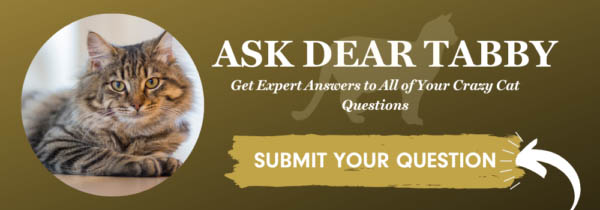
Chew on this: I may receive a small commission for affiliate links, but all products I “dig up” are ones I paw-thentically love!

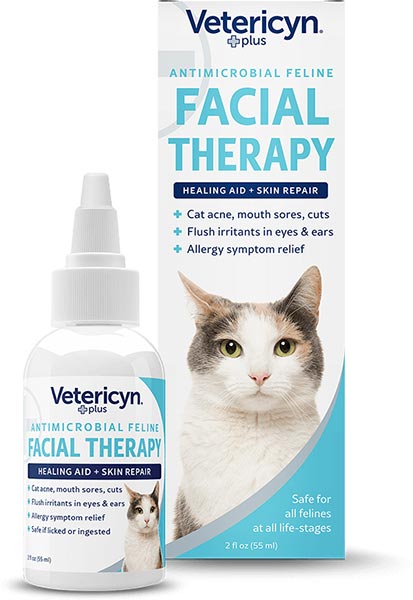




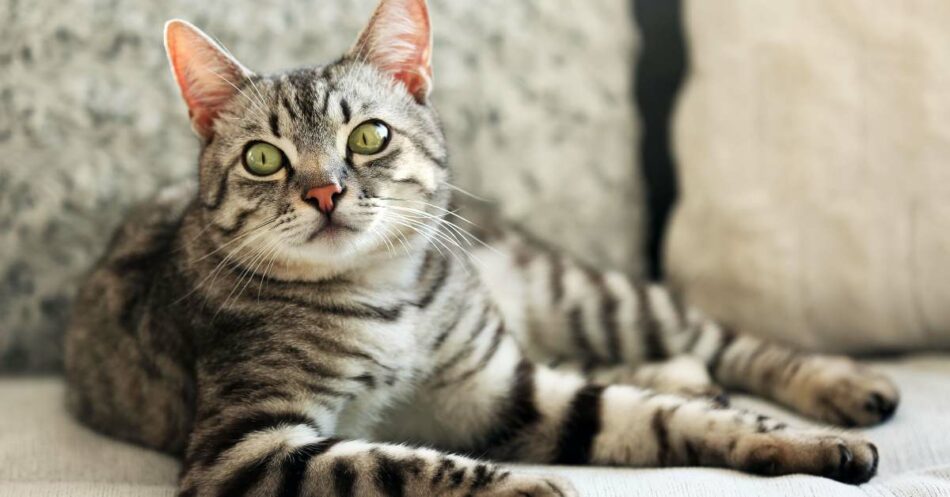
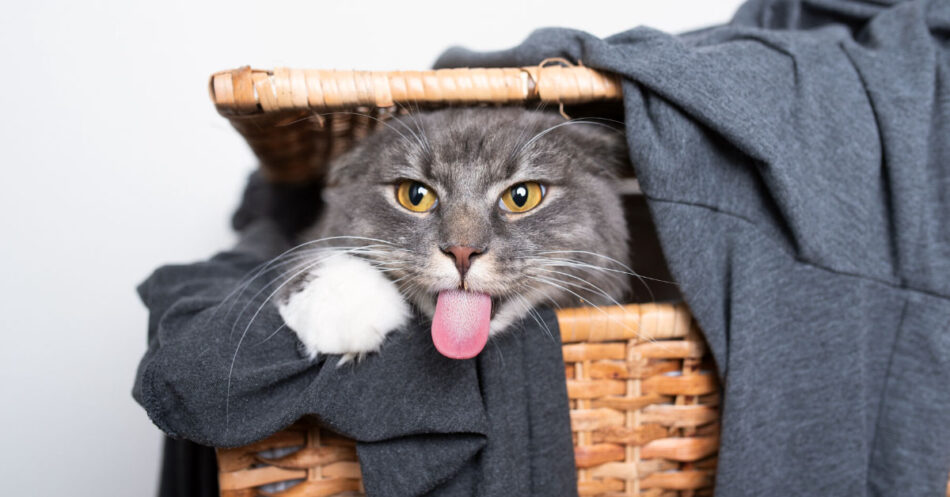
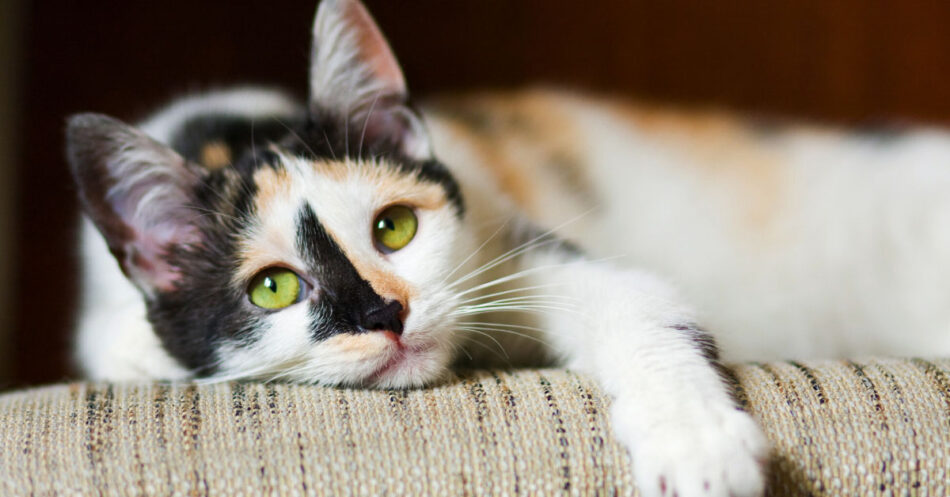
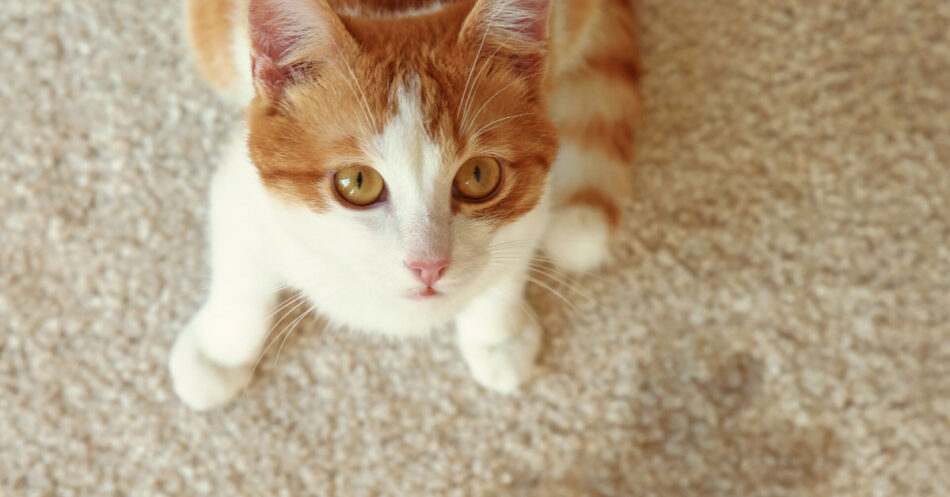
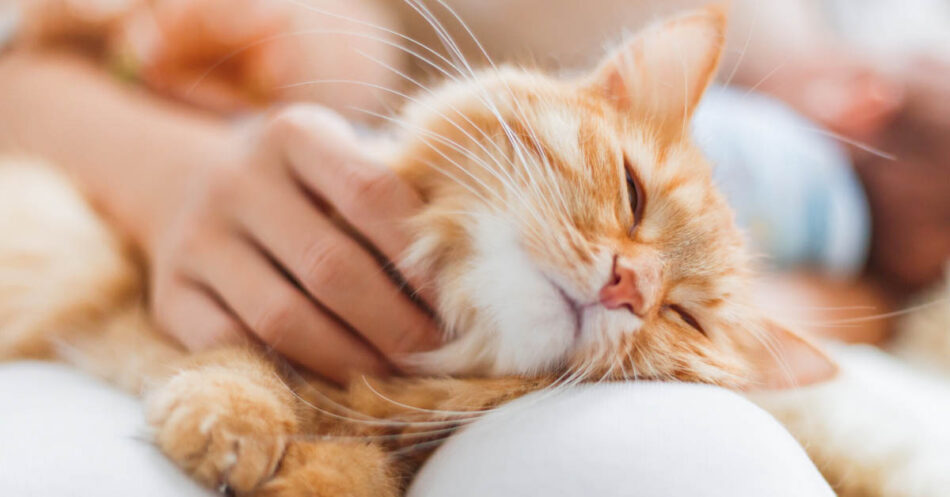
Comments (0)